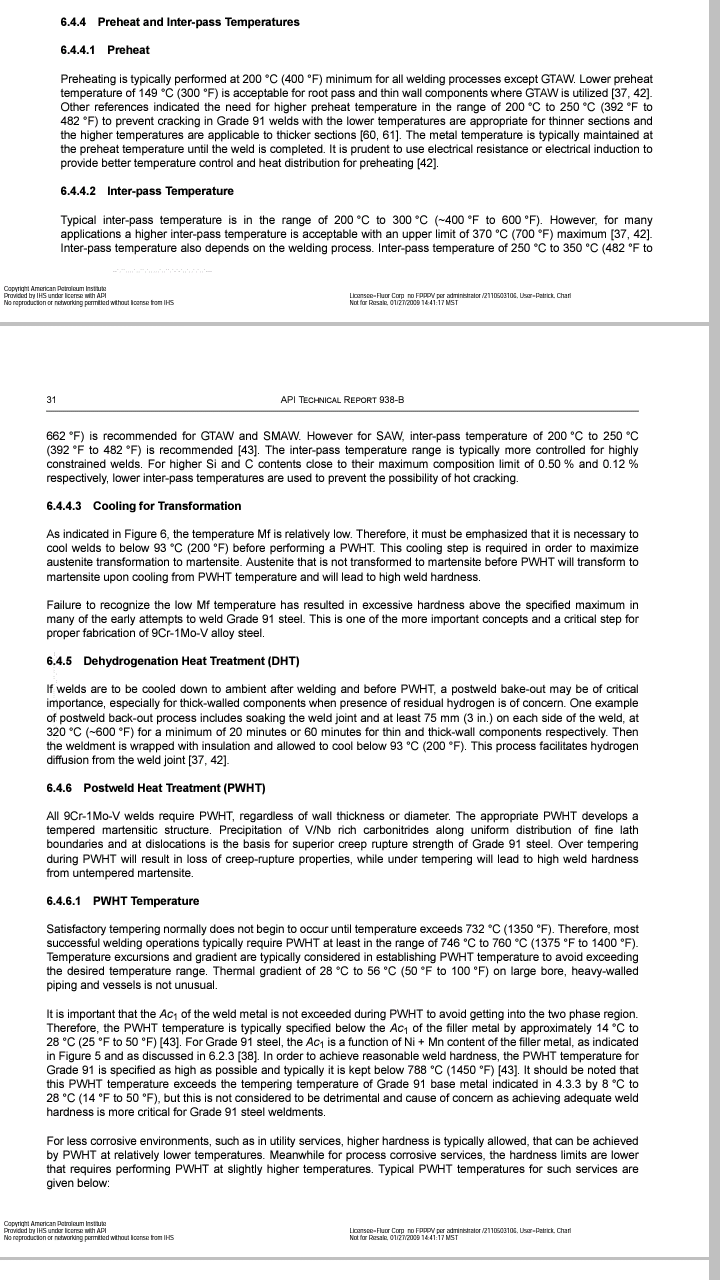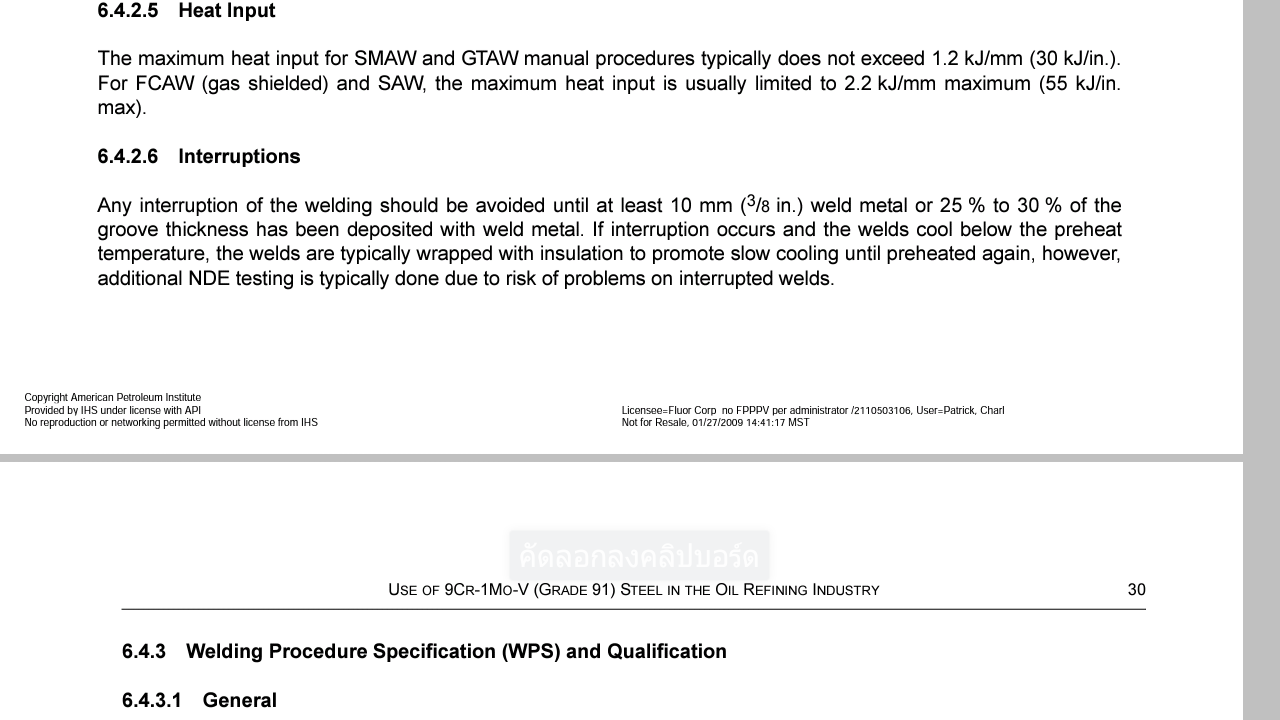Toey,
What base metal(s) are you dealing with? I agree with Al that this requirement applies only to P5B and P15E.
If you are dealing with Gr.91 (P15E), one of the most widely used Creep Strength Enhanced Ferritic Steel (CSEF), I happen to have a hint to share here.
The following is quoted from a guideline for welding of CSEF;s:
Post Weld “Bake-Out”
A post weld “bake-out” may be of critical importance, especially for heavy sections or where
flux-type processes are used. This involves maintaining the preheat/interpass window for an
extended period of time subsequent to interruption or completion of the weld in order to facilitate
hydrogen diffusion from the weldment. Of the many variables involved when attempting to
establish the length of time necessary, are the thickness of the material, length of time the
weldment has been exposed to the heat regime and the extent of “low hydrogen” practices. If the
fabrication schedule requires the weldment to cool to room temperature prior to PWHT, a 4 hour
bake-out at the preheating temperature is a good starting point. Shorter times at higher
temperatures are also common; e.g. 15 minutes at 316C (600F). Where proper preheat,
consumables and storage/handling are implemented, bake-outs can be minimized or even
eliminated. However, maintaining preheat or use of a post bake can minimize the potential for
inadvertent contamination and reduce the risk of stress corrosion cracking (SCC).
With this clue I am inclined to believe that the B31.1 intermediate heat treatment = post weld "bake out".
B31.1 does not use the "bake out" or "post heat" probably because they are nonstandard terms. Let me know your thoughts.
Have a great day.
Jovi





